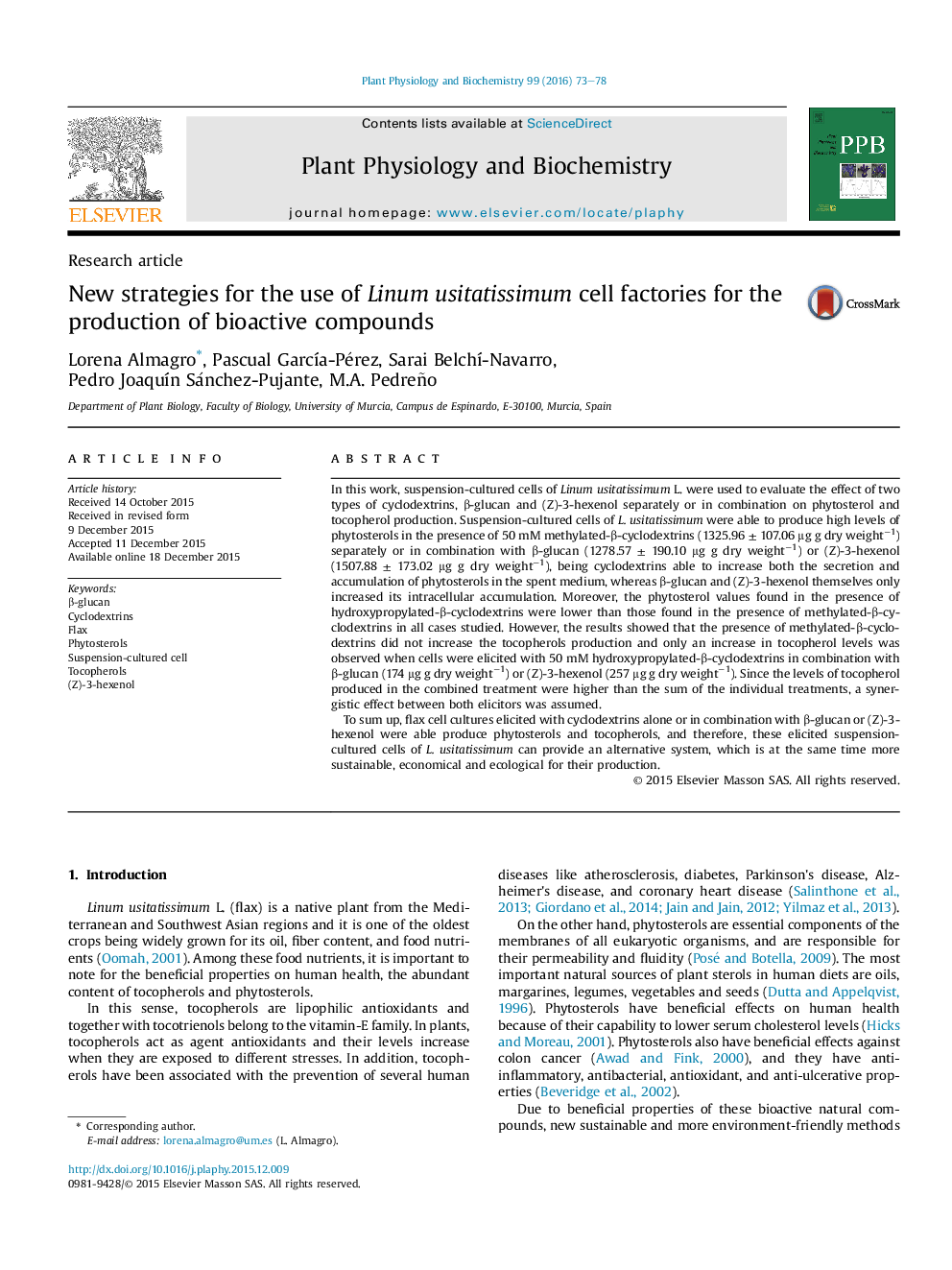| Article ID | Journal | Published Year | Pages | File Type |
|---|---|---|---|---|
| 2014790 | Plant Physiology and Biochemistry | 2016 | 6 Pages |
•50 mM methylated-β-cyclodextrins increase extracellular phytosterol production.•50 mM hydroxypropylated-β-cyclodextrins increase extracellular tocopherol production.•The combined treatment induces the maximal level of tocopherols.•The combined treatment induces a synergistic effect of tocopherol production.
In this work, suspension-cultured cells of Linum usitatissimum L. were used to evaluate the effect of two types of cyclodextrins, β-glucan and (Z)-3-hexenol separately or in combination on phytosterol and tocopherol production. Suspension-cultured cells of L. usitatissimum were able to produce high levels of phytosterols in the presence of 50 mM methylated-β-cyclodextrins (1325.96 ± 107.06 μg g dry weight−1) separately or in combination with β-glucan (1278.57 ± 190.10 μg g dry weight−1) or (Z)-3-hexenol (1507.88 ± 173.02 μg g dry weight−1), being cyclodextrins able to increase both the secretion and accumulation of phytosterols in the spent medium, whereas β-glucan and (Z)-3-hexenol themselves only increased its intracellular accumulation. Moreover, the phytosterol values found in the presence of hydroxypropylated-β-cyclodextrins were lower than those found in the presence of methylated-β-cyclodextrins in all cases studied. However, the results showed that the presence of methylated-β-cyclodextrins did not increase the tocopherols production and only an increase in tocopherol levels was observed when cells were elicited with 50 mM hydroxypropylated-β-cyclodextrins in combination with β-glucan (174 μg g dry weight−1) or (Z)-3-hexenol (257 μg g dry weight−1). Since the levels of tocopherol produced in the combined treatment were higher than the sum of the individual treatments, a synergistic effect between both elicitors was assumed.To sum up, flax cell cultures elicited with cyclodextrins alone or in combination with β-glucan or (Z)-3-hexenol were able produce phytosterols and tocopherols, and therefore, these elicited suspension-cultured cells of L. usitatissimum can provide an alternative system, which is at the same time more sustainable, economical and ecological for their production.
